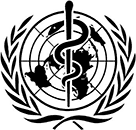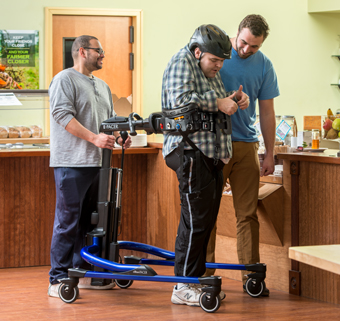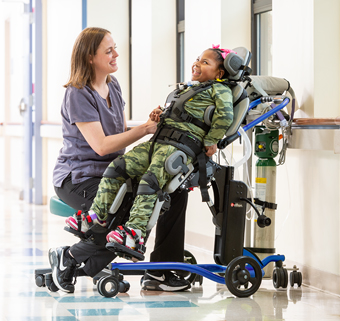Highlights of the IV Step Conference
| August 2016 The IV STEP conference was held at Ohio State University in Columbus on July 13-19. Approximately 800 people attended, including someone from every continent except Antarctica! Historically, the STEP conferences have challenged us to re-examine how we are treating individuals with neurological conditions across the lifespan. This was just the 4th STEP conference in nearly 50 years and it was focused on the “Four Ps: Prediction, Prevention, Plasticity and Participation.” This conference used a combination of plenary presentations and video case studies to encourage discussion and debate.
The IV STEP conference was held at Ohio State University in Columbus on July 13-19. Approximately 800 people attended, including someone from every continent except Antarctica! Historically, the STEP conferences have challenged us to re-examine how we are treating individuals with neurological conditions across the lifespan. This was just the 4th STEP conference in nearly 50 years and it was focused on the “Four Ps: Prediction, Prevention, Plasticity and Participation.” This conference used a combination of plenary presentations and video case studies to encourage discussion and debate.
Prediction
Prediction was addressed by encouraging the physical therapy profession to develop and embrace a common language about diagnosis, specifically diagnoses describing movement system dysfunction. Coming up with movement system diagnoses is essentially pattern recognition—but naming those patterns in a way that is meaningful to physical therapists and also allows for prediction of outcomes. These movement system diagnoses have not yet been developed, and the APTA has developed a task force to begin work in this direction. An example might be “decreased force production and selective motor control” vs. using the old language of cerebral palsy. The idea is to identify the key features meaningful to physical therapists instead of using the medical diagnosis, which often does not guide treatment.
Prevention
Several presentations looked at the influence of genetics and epigenetics on prediction of outcomes and prevention of disease. The study of genetics may increase understanding of the biology of disease, inform therapeutic decision-making, or better estimate individual prognosis. Genetics is the variation of inherited characteristics, while epigenetics is how modifying gene activity or expression results in changes (without altering the genetic code itself.) For example, genetic factors may influence brain plasticity and recovery after neural injury. Gene manipulation and stem cell research may lead to new treatments in the future. Another key topic for prevention was a presentation on childhood obesity and how to improve child health. Some speakers looked at the emergence of telehealth and new wearable technologies as ways to improve participation and prevention.
Plasticity
Several researchers talked about plasticity in the realm of locomotor training or intensive exercise after spinal cord injury, stroke and several other neurological conditions. A key point that came out of these studies was that sometimes good interventions fail to show results and that we have to identify key differences between responders and non-responders. Another take-home point was that we know that dosage of the intervention is important, but we still don’t know what the optimal dose is, and it is likely different for each patient.
So an additional important message of the IV STEP conference was that we need to consider research designs that will allow us to analyze individual responses to intervention. Although the randomized controlled trial is considered the gold standard, physical therapy research is very different from drug trials and as a result, a randomized controlled trial may not be the best way to find what works for each unique patient. Single subject designs and case series were discussed as examples that may be helpful in the future.
Participation
The most widely known definition of participation is from the World Health Organization’s ICF framework: “Involvement of people in all areas of life or the functioning of a person as a member of society. Participation restrictions are problems an individual may experience in involvement in life situations.” Our field has a lot of work to do in this area. One 2015 systematic review found few high-quality studies reporting favorable participation results after intervention in children with disabilities. We need less emphasis on strategies that improve impairments that may characterize individuals with movement disorders, and more emphasis on interventions that affect participation outcomes. In simple terms, we need to focus more on helping children and adults do what they want to do with their life, especially in regards to school, play, work and recreational activities.
 IV Step Recaps—Conferences and More
IV Step Recaps—Conferences and More
The key messages of IV STEP will be summarized and presented in multiple venues in the coming year. At the Combined Sections Meeting in February 2017 there will be a two-hour continuing education session as well as a two-day pre-conference program dedicated to a recap of IV STEP. Beyond that, there will be journal articles published by the IV STEP presenters, an ebook with the presentations and case studies, and possibly online continuing education modules also out in 2017. Check with the Neurology Academy or Academy of Pediatric Physical Therapy for more information.




